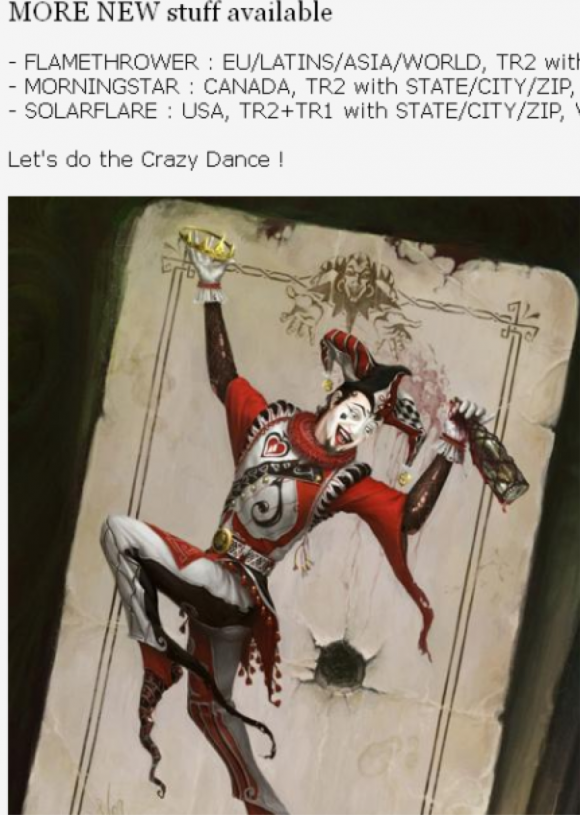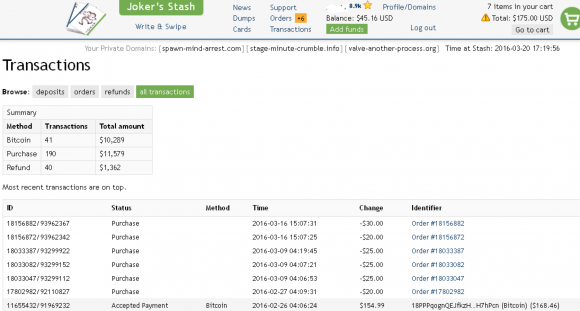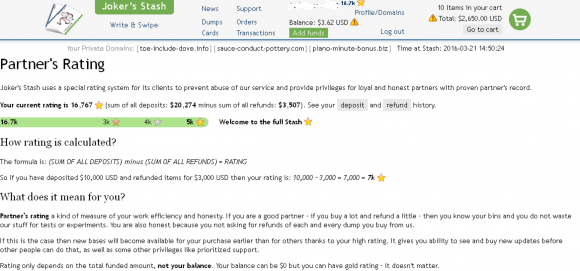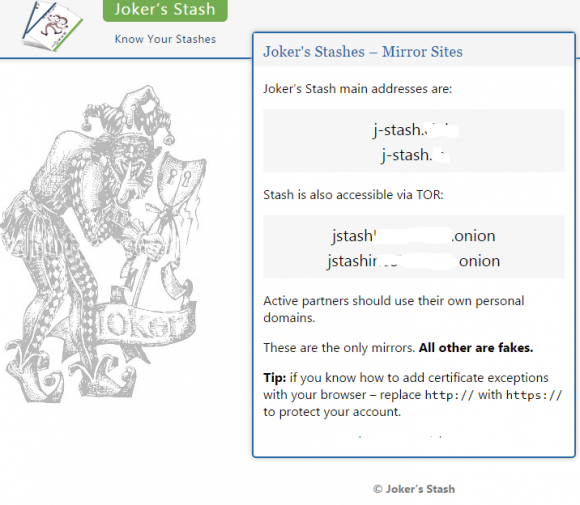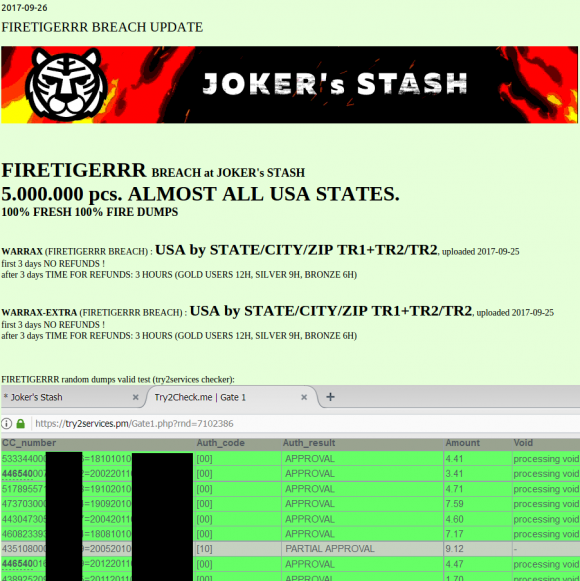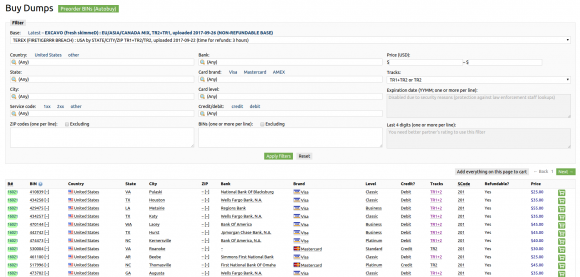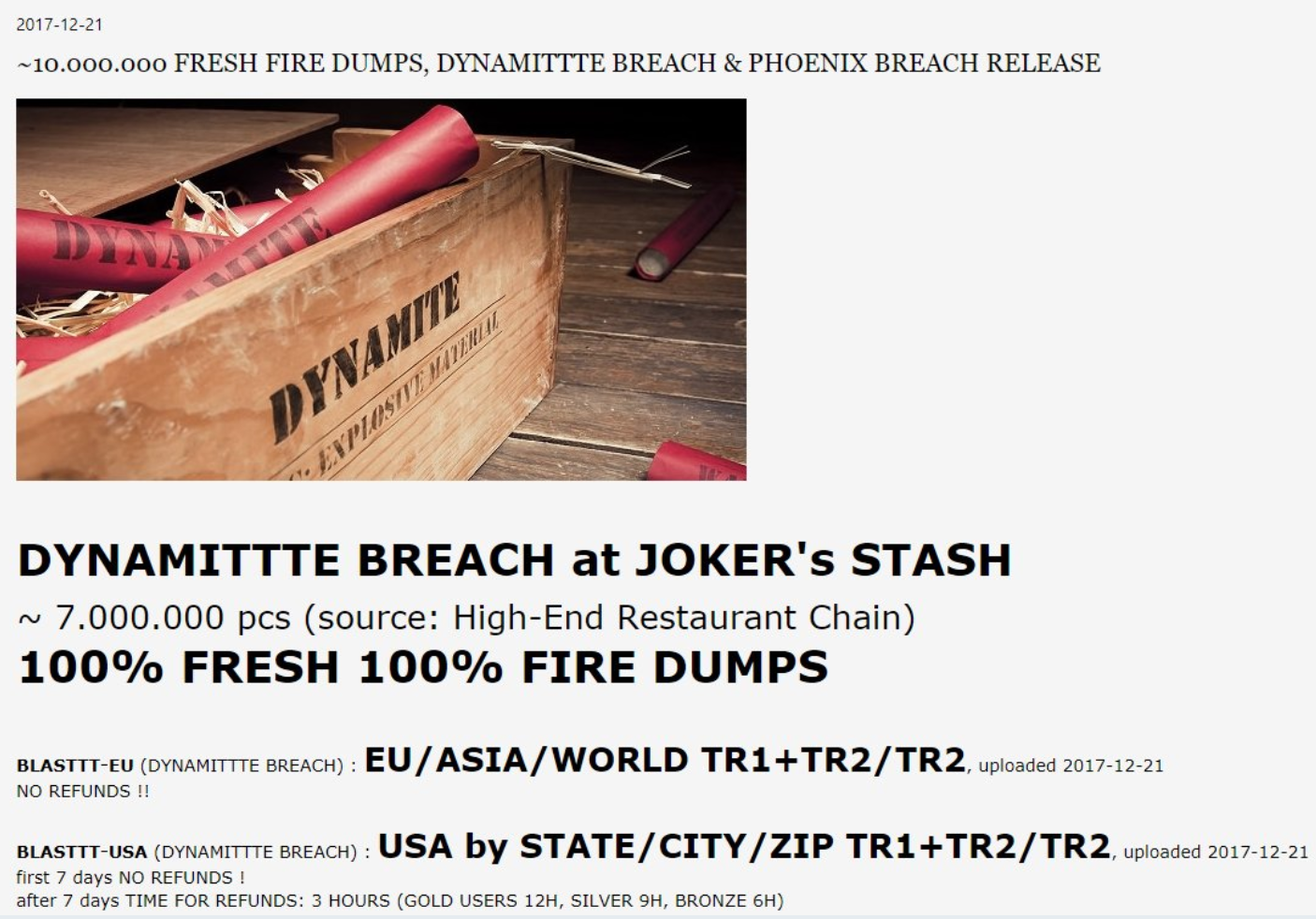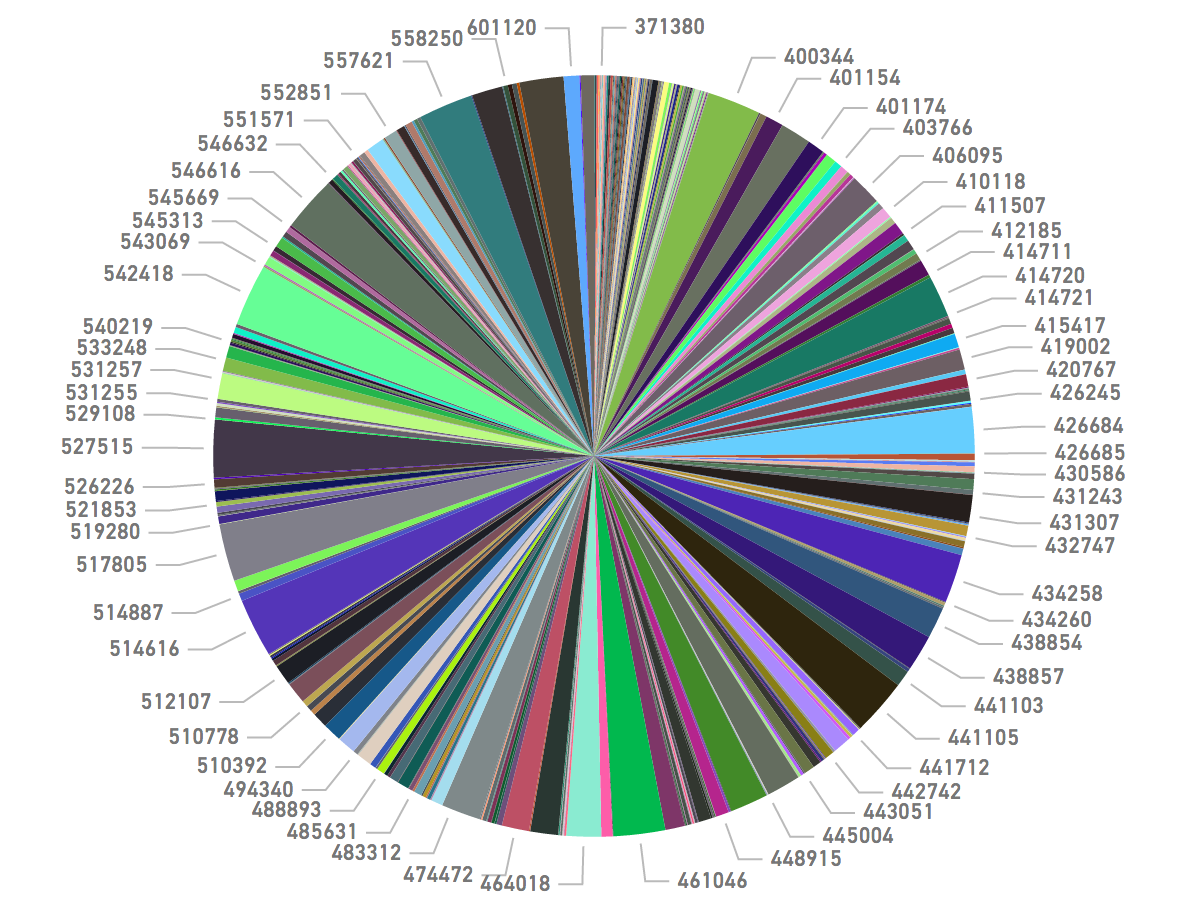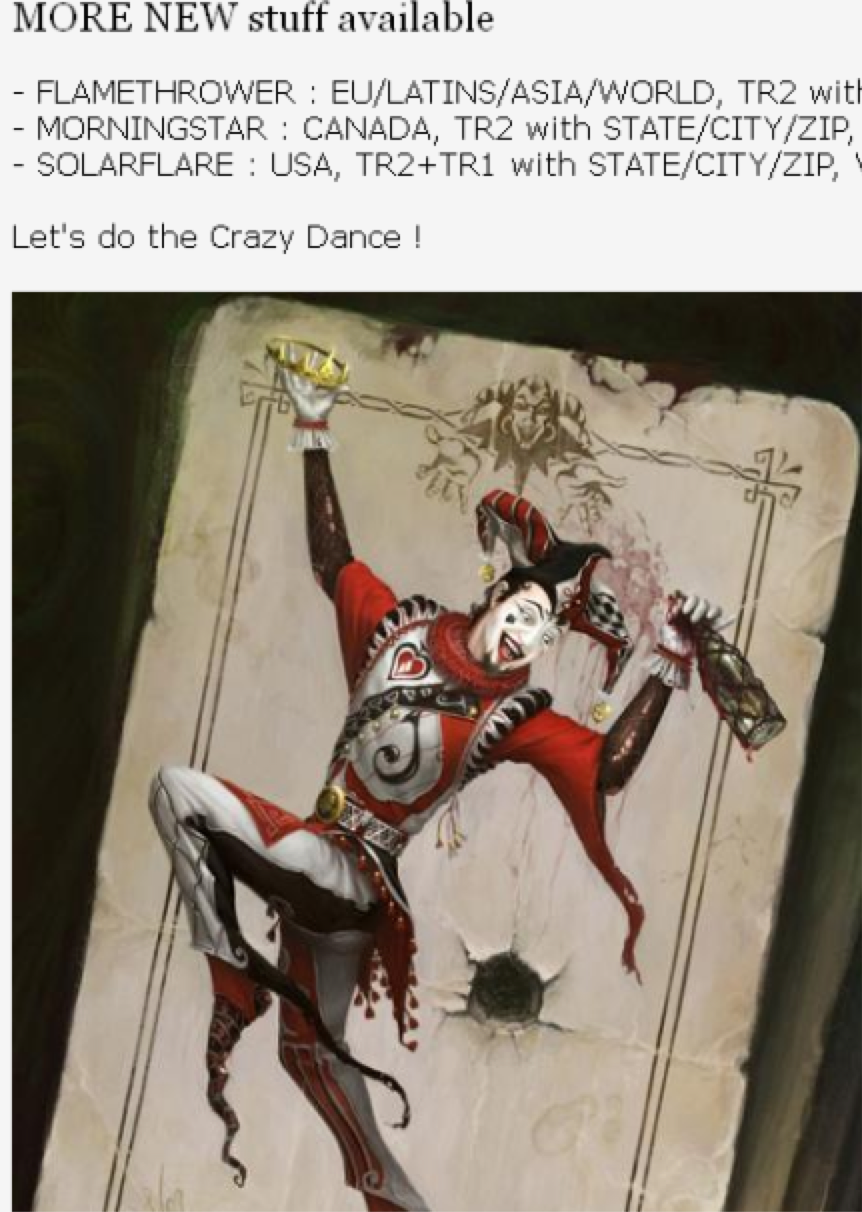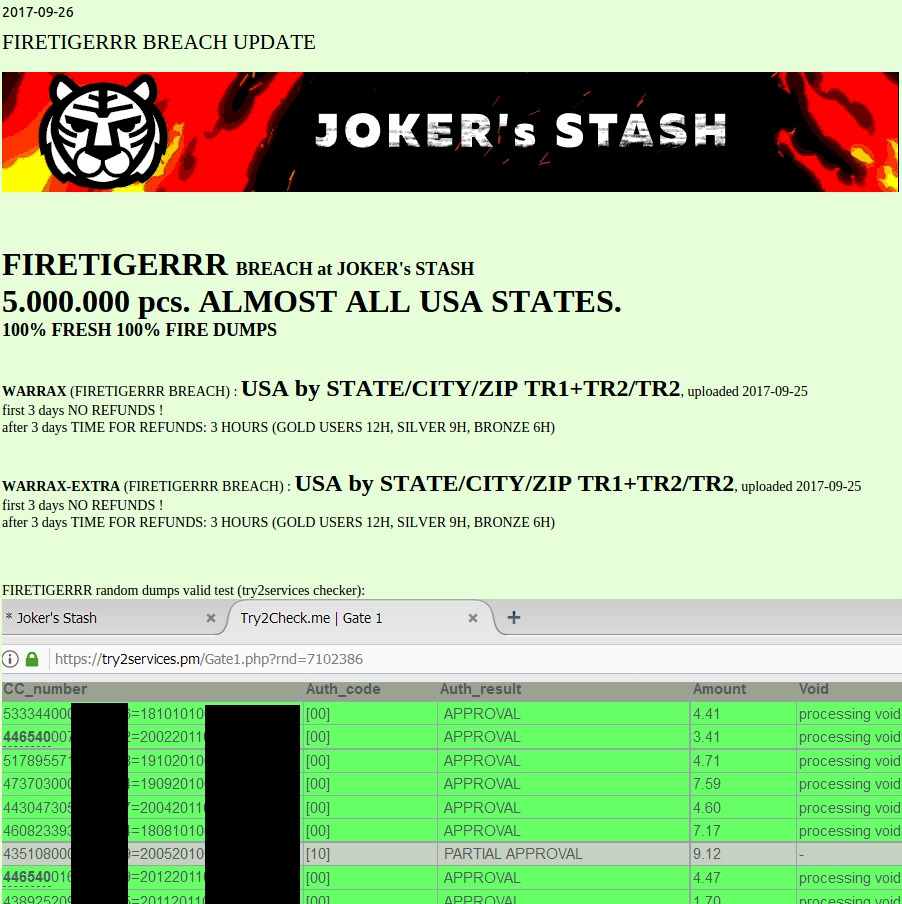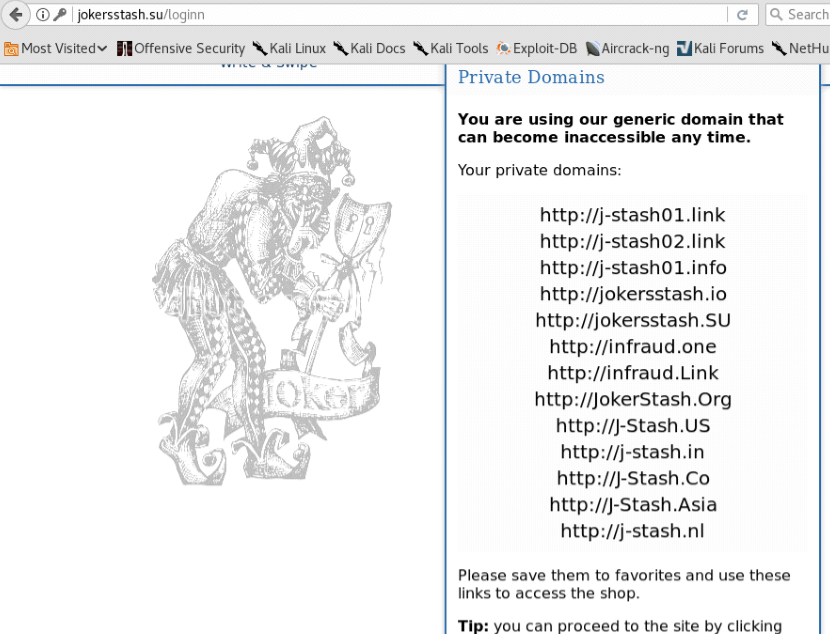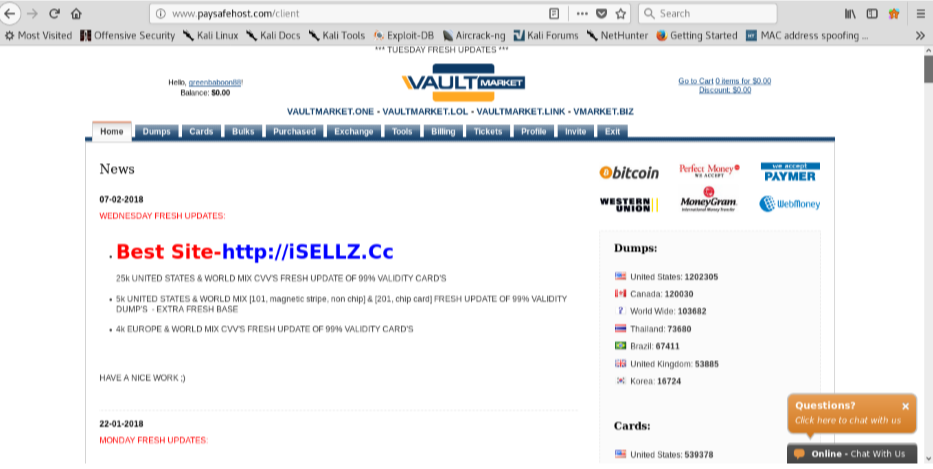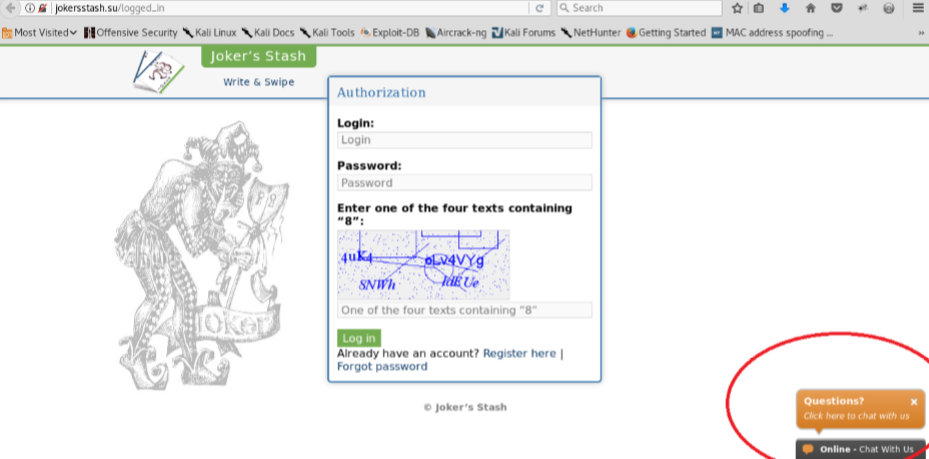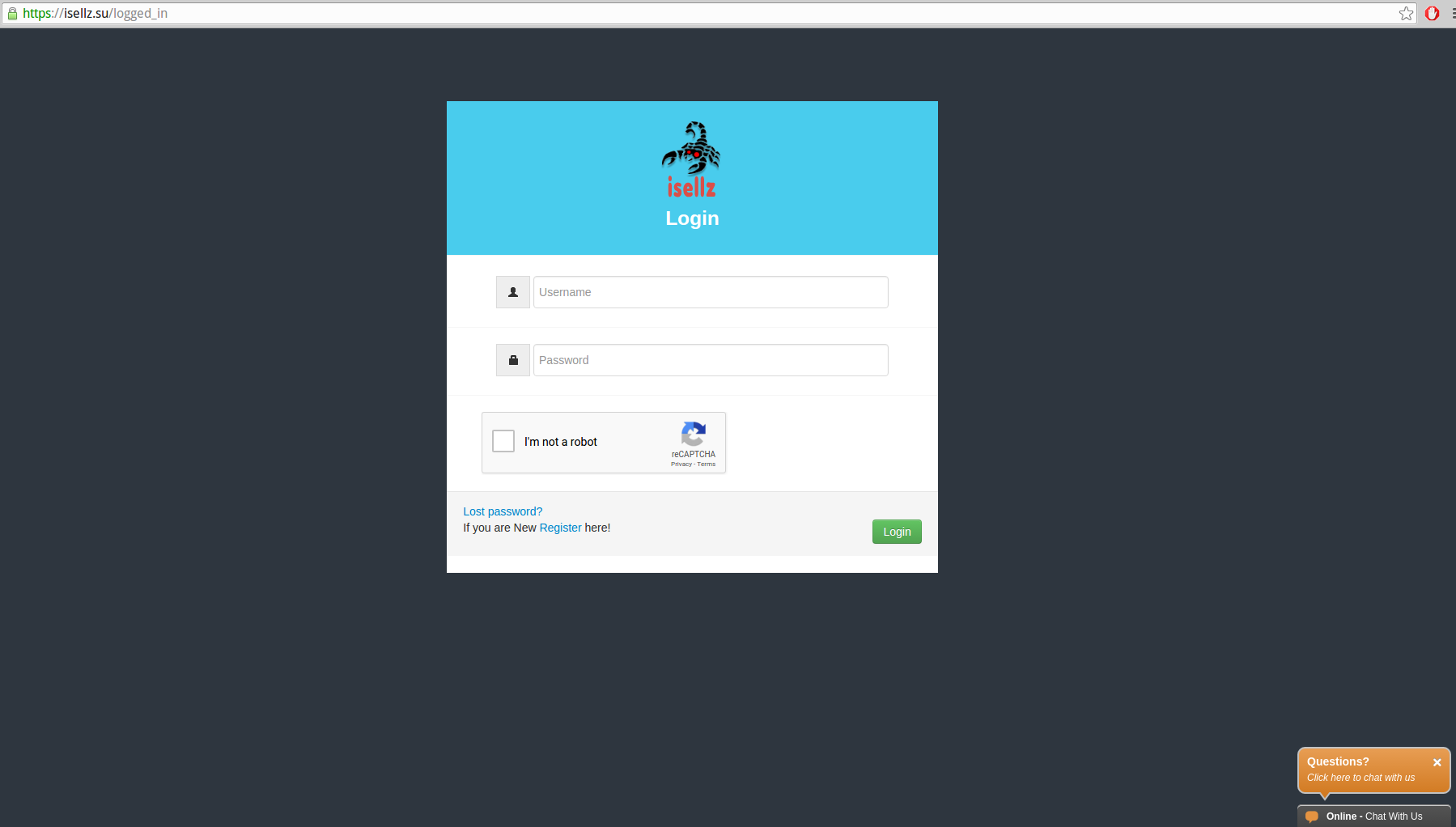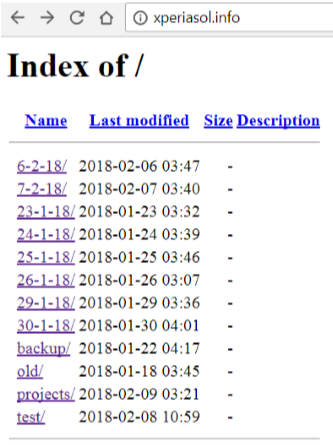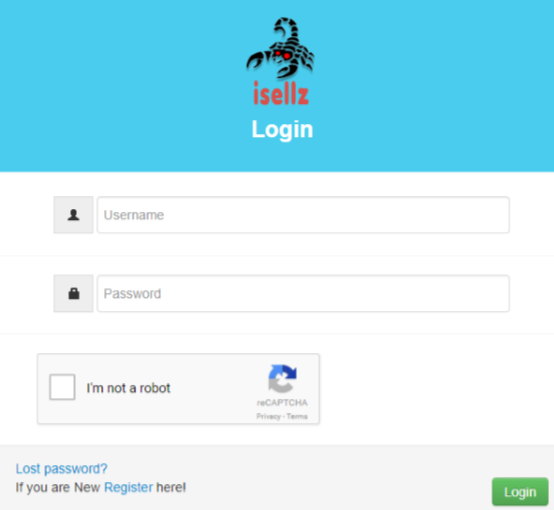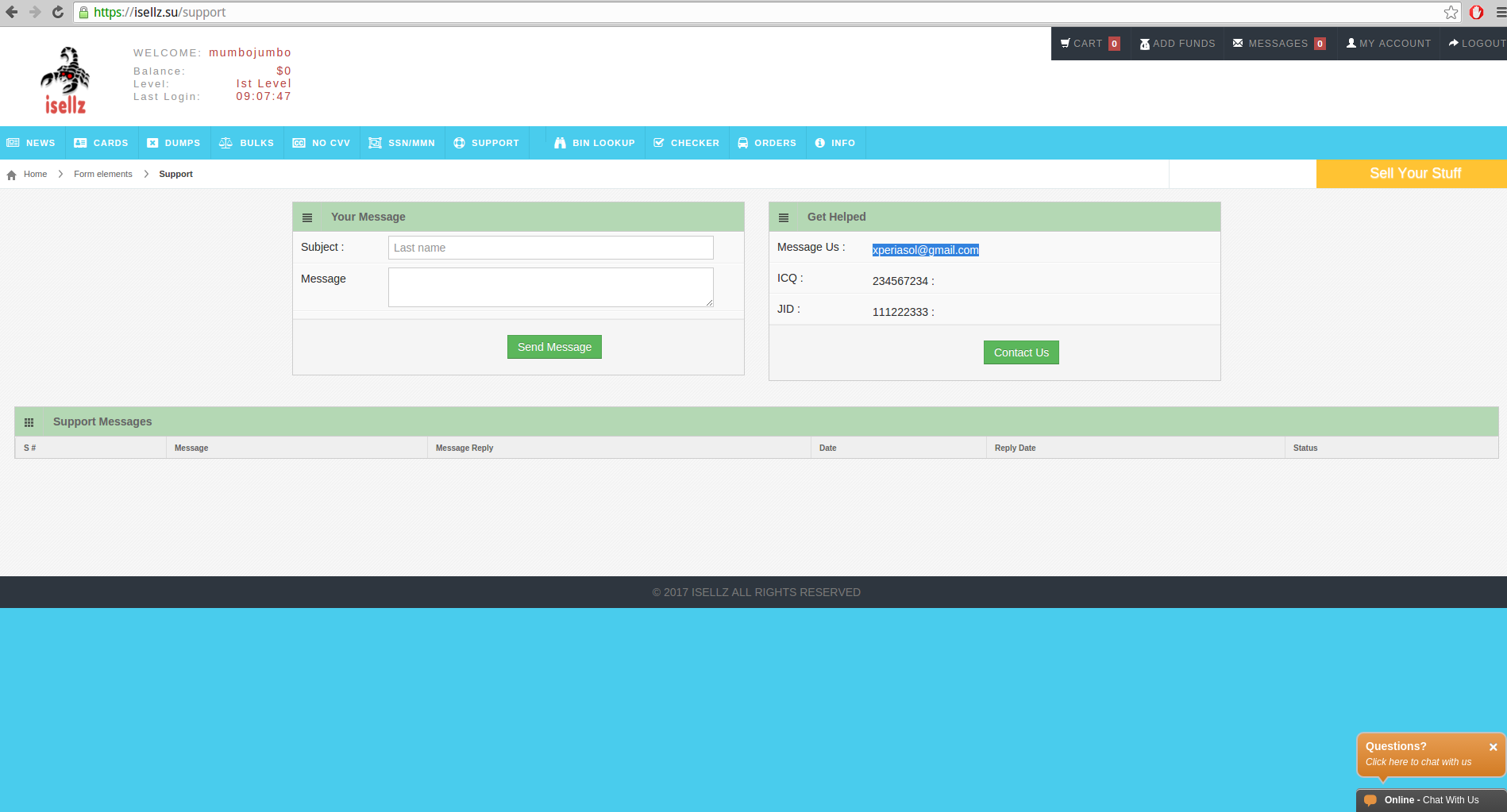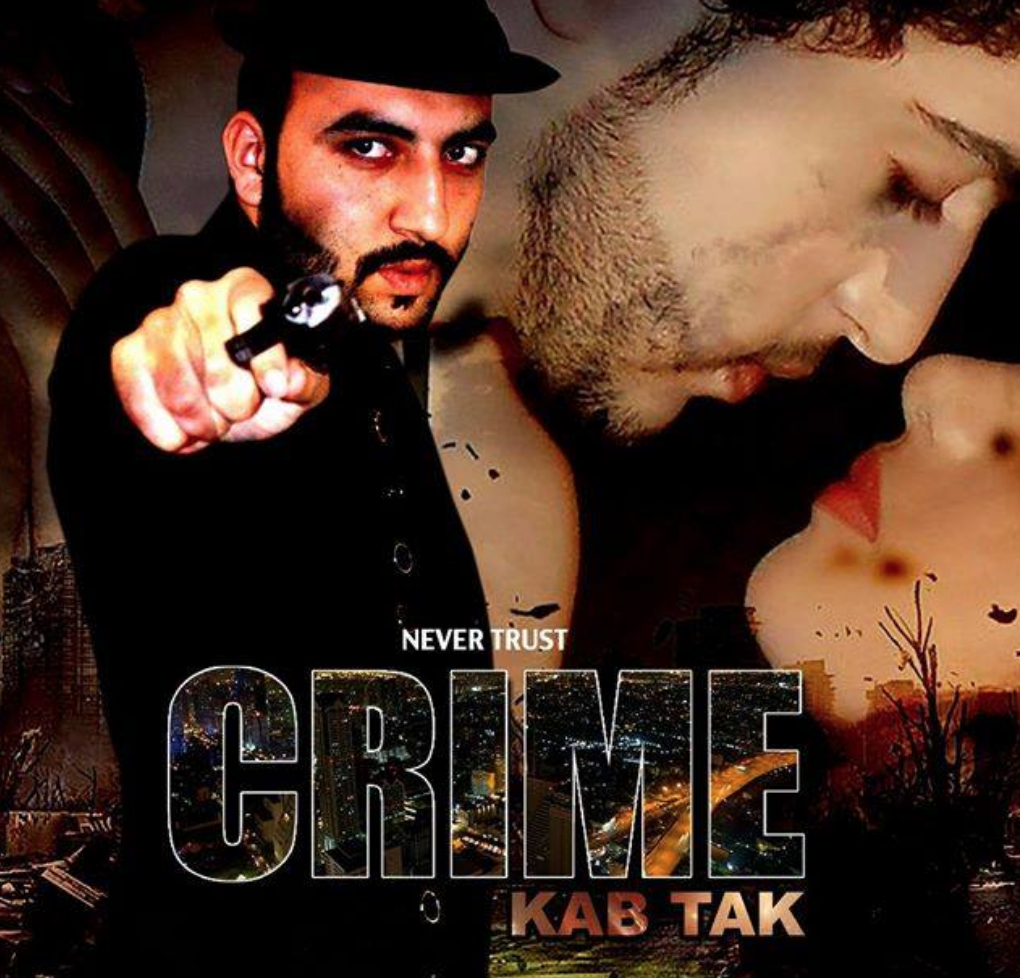目录导航
小丑账号 小丑账号注册 小丑网站介绍
小丑账号
需要 小丑账号 的联系 雨苁 QQ569743
387个暗网网址
小丑账号 小丑网站网址 http://jstash.bazar
为什么选小丑? 小丑账号
WHY US ? Millions of fresh fire DUMPS & CVV in stock - usa/eu/asia/world_mix dumps & cvv stuff -- the largest selection on the market - fresh high-valid BIG updates every fucking day ! - automatic discount system Automatic SSN/DOB lookup service - big fresh base -- any age lookup - quick real-time search we have an official threads on these forums also: om*****.mn (omert*****.onion), c*****.ws (crdclu*****.onion), ve*****.vc (verified*****.onion), korovka.cc (korovk*****.onion), so you can find more feedbacks on these forums if you need
以前从未听过小丑?看下面的4个介绍吧
001
Carders Park Piles of Cash at Joker’s Stash
A steady stream of card breaches at retailers, restaurants and hotels has flooded underground markets with a historic glut of stolen debit and credit card data. Today there are at least hundreds of sites online selling stolen account data, yet only a handful of them actively court bulk buyers and organized crime rings. Faced with a buyer’s market, these elite shops set themselves apart by focusing on loyalty programs, frequent-buyer discounts, money-back guarantees and just plain old good customer service. 小丑账号
Today’s post examines the complex networking and marketing apparatus behind “Joker’s Stash,” a sprawling virtual hub of stolen card data that has served as the distribution point for accounts compromised in many of the retail card breaches first disclosed by KrebsOnSecurity over the past two years, including Hilton Hotels and Bebe Stores.
Since opening for business in early October 2014, Joker’s Stash has attracted dozens of customers who’ve spent five- and six-figures at the carding store. All customers are buying card data that will be turned into counterfeit cards and used to fraudulently purchase gift cards, electronics and other goods at big-box retailers like Target and Wal-Mart.
Unlike so many carding sites that mainly resell cards stolen by other hackers, Joker’s Stash claims that all of its cards are “exclusive, self-hacked dumps.” 小丑账号
“This mean – in our shop you can buy only our own stuff, and our stuff you can buy only in our shop – nowhere else,” Joker’s Stash explained on an introductory post on a carding forum in October 2014.
“Just don’t wanna provide the name of victim right here, and bro, this is only the begin[ning], we already made several other big breaches – a lot of stuff is coming, stay tuned, check the news!” the Joker went on, in response to established forum members who were hazing the new guy. He continued:
“I promise u – in few days u will completely change your mind and will buy only from me. I will add another one absolute virgin fresh new zero-day db with 100%+1 valid rate. Read latest news on http://krebsonsecurity.com/ – this new huge base will be available in few days only at Joker’s Stash.”
As a business, Joker’s Stash made good on its promise. It’s now one of the most bustling carding stores on the Internet, often adding hundreds of thousands of freshly stolen cards for sale each week. 小丑账号
A true offshore pirate’s haven, its home base is a domain name ending in “.sh” Dot-sh is the country code top level domain (ccTLD) assigned to the tiny volcanic, tropical island of Saint Helena, but anyone can register a domain ending in dot-sh. St. Helena is on Greenwich Mean Time (GMT) — the same time zone used by this carding Web site. However, it’s highly unlikely that any part of this fraud operation is in Saint Helena, a remote British territory in the South Atlantic Ocean that has a population of just over 4,000 inhabitants.
This fraud shop includes a built-in discount system for larger orders: 5 percent for customers who spend between $300-$500; 15 percent off for fraudsters spending between $1,000 and $2,500; and 30 percent off for customers who top up their bitcoin balances to the equivalent of $10,000 or more.
For its big-spender “partner” clients, Joker’s Stash assigns three custom domain names to each partner. After those partners log in, the different 3-word domains are displayed at the top of their site dashboard, and the user is encouraged to use only those three custom domains to access the carding shop in the future (see screenshot below). More on these three domains in a moment.
The dashboard for a Joker’s Stash customer who has spent over $10,000 buying stolen credit cards from the site. Click image to enlarge.
REFUNDS AND CUSTOMER LOYALTY BONUSES 小丑账号
Customers pay for stolen cards using Bitcoin, a virtual currency. All sales are final, although some batches of stolen cards for sale at Joker’s Stash come with a replacement policy — a short window of time from minutes to a few hours, generally — in which buyers can request replacement cards for any that come back as declined during that replacement timeframe.
Like many other carding shops, Joker’s Stash also offers an a-la-carte card-checking option that customers can use an insurance policy when purchasing stolen cards. Such checking services usually rely on multiple legitimate, compromised credit card merchant accounts that can be used to round-robin process a small charge against each card the customer wishes to purchase to test whether the card is still valid. Customers receive an automatic credit to their shopping cart balances for any purchased cards that come back as declined when run through the site’s checking service.
This carding site also employs a unique rating system for clients, supposedly to prevent abuse of the service and to provide what the proprietors of this store call “a loyalty program for honest partners with proven partner’s record.”
Customers with higher ratings get advance notice of new batches of stolen cards coming up for sale, prioritized support requests, as well as additional time to get refunds on cards that came back as “declined”
According to Joker’s Stash administrators, customers with higher ratings get advance notice of new batches of stolen cards coming up for sale, prioritized support requests, as well as additional time to get refunds on cards that came back as “declined” or closed by the issuing bank shortly after purchase.
To determine a customer’s loyalty rating, the system calculates the sum of all customer deposits minus the total refunds requested by the customer.
“So if you have deposited $10,000 USD and refunded items for $3,000 USD then your rating is: 10,000 – 3,000 = 7,000 = 7k [Gold rating – you are the king],” Joker’s Stash explains. “If this is the case then new bases will become available for your purchase earlier than for others thanks to your high rating. It gives you ability to see and buy new updates before other people can do that, as well as some other privileges like prioritized support.” 小丑账号
This user has a stellar 16,000+ rating, because he’s deposited more than $20,000 and only requested refunds on $3,500 worth of stolen cards. Click image to enlarge.
HIGH ROLLERS 小丑账号
It would appear that Joker’s Stash has attracted a large number of high-dollar customers, and a good many of them qualify for the elite, “full stash” category reserved for clients who’ve deposited more than $10,000 and haven’t asked for more than about 30 percent of those cards to be refunded or replaced. KrebsOnSecurity has identified hundreds of these three-word domains that the card site has assigned to customers. They were mostly all registered across an array of domain registrars over the the past year, and nearly all are (ab)using services from a New Jersey-based cloud hosting firm called Vultr Holdings.
All customers — be they high-roller partners or one-card-at-a-time street thugs — are instructed on how to log in to the site with software that links users to the Tor network. Tor is a free anonymity network that routes its users’ encrypted traffic between multiple hops around the globe to obscure their real location online.
The site’s administrators no doubt very much want all customers to use the Tor version of the site as opposed to domains reachable on the open Internet. Carding site domain names get seized all the time, but it is far harder to discover and seize a site or link hosted on Tor.
What’s more, switching domain names all the time puts carding shop customers in the crosshairs of phishers and other scam artists. While customers are frantically searching for the shop’s updated domain name, fraudsters step in to take advantage of the confusion and to promote counterfeit versions of the site that phish account credentials from unwary criminals.
Nicholas Weaver, a senior researcher in networking and security for the International Computer Science Institute (ICSI), said it looks like the traffic from the three-word domains that Joker’s Stash assigns to each user gets routed through the same Tor hidden servers.
“What he appears to be doing is throwing up an Nginx proxy on each Internet address he’s using to host the domain sets given to users,” Weaver said. “This communicates with his back end server, which is also reachable as one of two Tor hidden services. And both are the same server: If you add to your shopping cart in Tor, it shows up instantly in the clearnet version of the site, and the same with removing cards. So my conclusion is both clearnet and Tornet are the same server on the back end.”
By routing all three-word partner domains through server hidden on Tor, the Joker’s Stash administration seems to understand that many customers can’t be bothered to run Tor and if forced to will just go to a competing site that allows direct access via a regular, non-Tor-based Internet connection.
“My guess is [Joker’s Stash] would like everyone to go to Tor, but they know that Tor is a pain, so they’re using the clearnet because that is what customers demand,” Weaver said.
Interestingly, this setup suggests several serious operational security failures by the Joker’s Stash staff. For example, while Tor encrypts data at every hop in the network, none of the partner traffic from any of the custom three-word domains is encrypted by default on its way to the Tor version of the site. To their credit, the site administrators do urge users to change this default setting by replacing http:// with https:// in front of their private domains.
A web page lists the various ways to reach the carding forum on the clearnet or via Tor. The links have been redacted.
I’ll have more on Joker’s Stash in an upcoming post. In the meantime, if you enjoyed this story, check out a deep dive I did last year into “McDumpals,” another credit card fraud bazaar that caters to bulk buyers and focuses heavily on customer service.
002 小丑账号
Breach at Sonic Drive-In May Have Impacted Millions of Credit, Debit Cards
Sonic Drive-In, a fast-food chain with nearly 3,600 locations across 45 U.S. states, has acknowledged a breach affecting an unknown number of store payment systems. The ongoing breach may have led to a fire sale on millions of stolen credit and debit card accounts that are now being peddled in shadowy underground cybercrime stores, KrebsOnSecurity has learned.
The first hints of a breach at Oklahoma City-based Sonic came last week when I began hearing from sources at multiple financial institutions who noticed a recent pattern of fraudulent transactions on cards that had all previously been used at Sonic.
I directed several of these banking industry sources to have a look at a brand new batch of some five million credit and debit card accounts that were first put up for sale on Sept. 18 in a credit card theft bazaar previously featured here called Joker’s Stash:
This batch of some five million cards put up for sale today (Sept. 26, 2017) on the popular carding site Joker’s Stash has been tied to a breach at Sonic Drive-In. The first batch of these cards appear to have been uploaded for sale on Sept. 15.
Sure enough, two sources who agreed to purchase a handful of cards from that batch of accounts on sale at Joker’s discovered they all had been recently used at Sonic locations.
Armed with this information, I phoned Sonic, which responded within an hour that it was indeed investigating “a potential incident” at some Sonic locations.
“Our credit card processor informed us last week of unusual activity regarding credit cards used at SONIC,” reads a statement the company issued to KrebsOnSecurity. “The security of our guests’ information is very important to SONIC. We are working to understand the nature and scope of this issue, as we know how important this is to our guests. We immediately engaged third-party forensic experts and law enforcement when we heard from our processor. While law enforcement limits the information we can share, we will communicate additional information as we are able.”
Christi Woodworth, vice president of public relations at Sonic, said the investigation is still in its early stages, and the company does not yet know how many or which of its stores may be impacted.
The accounts apparently stolen from Sonic are part of a batch of cards that Joker’s Stash is calling “Firetigerrr,” and they are indexed by city, state and ZIP code. This geographic specificity allows potential buyers to purchase only cards that were stolen from Sonic customers who live near them, thus avoiding a common anti-fraud defense in which a financial institution might block out-of-state transactions from a known compromised card.
Malicious hackers typically steal credit card data from organizations that accept cards by hacking into point-of-sale systems remotely and seeding those systems with malicious software that can copy account data stored on a card’s magnetic stripe. Thieves can use that data to clone the cards and then use the counterfeits to buy high-priced merchandise from electronics stores and big box retailers.
Prices for the cards advertised in the Firetigerr batch are somewhat higher than for cards stolen in other breaches, likely because this batch is extremely fresh and unlikely to have been canceled by card-issuing banks yet.
Dumps available for sale on Joker’s Stash from the “FireTigerrr” base, which has been linked to a breach at Sonic Drive-In. Click image to enlarge.
Most of the cards range in price from $25 to $50, and the price is influenced by a number of factors, including: the type of card issued (Amex, Visa, MasterCard, etc); the card’s level (classic, standard, signature, platinum, etc.); whether the card is debit or credit; and the issuing bank.
I should note that it remains unclear whether Sonic is the only company whose customers’ cards are being sold in this particular batch of five million cards at Joker’s Stash. There are some (as yet unconfirmed) indications that perhaps Sonic customer cards are being mixed in with those stolen from other eatery brands that may be compromised by the same attackers.
The last known major card breach involving a large nationwide fast-food chain impacted more than a thousand Wendy’s locations and persisted for almost nine months after it was first disclosed here. The Wendy’s breach was extremely costly for card-issuing banks and credit unions, which were forced to continuously re-issue customer cards that kept getting re-compromised every time their customers went back to eat at another Wendy’s.
Part of the reason Wendy’s corporate offices had trouble getting a handle on the situation was that most of the breached locations were not corporate-owned but instead independently-owned franchises whose payment card systems were managed by third-party point-of-sale vendors.
According to Sonic’s Wikipedia page, roughly 90 percent of Sonic locations across America are franchised.
Dan Berger, president and CEO of the National Association of Federally Insured Credit Unions, said he’s not looking forward to the prospect of another Wendy’s-like fiasco.
“It’s going to be the financial institution that makes them whole, that pays off the charges or replaces money in the customer’s checking account, or reissues the cards, and all those costs fall back on the financial institutions,” Berger said. “These big card breaches are going to continue until there’s a national standard that holds retailers and merchants accountable.”
Financial institutions also bear some of the blame for the current state of affairs. The United States is embarrassingly the last of the G20 nations to make the shift to more secure chip-based cards, which are far more expensive and difficult for criminals to counterfeit. But many financial institutions still haven’t gotten around to replacing traditional magnetic stripe cards with chip-based cards. According to Visa, 58 percent of the more than 421 million Visa cards issued by U.S. financial institutions were chip-based as of March 2017.
Likewise, retailers that accept chip cards may present a less attractive target to hackers than those that don’t. In March 2017, Visa said the number of chip-enabled merchant locations in the country reached two million, representing 44 percent of stores that accept Visa.
003 小丑账号
4 Years After Target, the Little Guy is the Target
Dec. 18 marked the fourth anniversary of this site breaking the news about a breach at Target involving some 40 million customer credit and debit cards. It has been fascinating in the years since that epic intrusion to see how organized cyber thieves have shifted from targeting big box retailers to hacking a broad swath of small to mid-sized merchants.
In many ways, not much has changed: The biggest underground shops that sell stolen cards still index most of their cards by ZIP code. Only, the ZIP code corresponds not to the legitimate cardholder’s billing address but to the address of the hacked store at which the card in question was physically swiped (the reason for this is that buyers of these cards tend to prefer cards used by people who live in their geographic area, as the subsequent fraudulent use of those cards tends to set off fewer alarm bells at the issuing bank).
Last week I was researching a story published here this week on how a steep increase in transaction fees associated with Bitcoin is causing many carding shops to recommend alternate virtual currencies like Litecoin. And I noticed that popular carding store Joker’s Stash had just posted a new batch of cards dubbed “Dynamittte,” which boasted some 7 million cards advertised as “100 percent” valid — meaning the cards were so fresh that even the major credit card issuers probably didn’t yet know which retail or restaurant breach caused this particular breach.
An advertisement for a large new batch of stolen credit card accounts for sale at the Joker’s Stash Dark Web market.
Translation: These stolen cards were far more likely to still be active and useable after fraudsters encode the account numbers onto fake plastic and use the counterfeits to go shopping in big box stores.
I pinged a couple of sources who track when huge new batches of stolen cards hit the market, and both said the test cards they’d purchased from the Joker’s Stash Dynamittte batch mapped back to customers who all had one thing in common: They’d all recently eaten at a Jason’s Deli location.
Jason’s Deli is a fast casual restaurant chain based in Beaumont, Texas, with approximately 266 locations in 28 states. Seeking additional evidence as to the source of the breach, I turned to the Jason’s Deli Web site and scraped the ZIP codes for their various stores across the country. Then I began comparing those ZIPs with the ZIPs tied to this new Dynamittte batch of cards at Joker’s Stash.
Checking my work were the folks at Mindwise.io, a threat intelligence startup in California that monitors Dark Web marketplaces and tries to extract useful information from them. Mindwise found a nearly 100 percent overlap between the ZIP codes on the “Blasttt-US” unit of the Dynamittte cards for sale and the ZIP codes for Jason’s Deli locations. 小丑账号
Reached for comment, Jason’s Deli released the following statement:
“On Friday, Dec. 22, 2017, our company was notified by payment processors – the organizations that manage the electronic connections between Jason’s Deli locations and payment card issuers – that MasterCard security personnel had informed it that a large quantity of payment card information had appeared for sale on the ‘dark web,’ and that an analysis of the data indicated that at least a portion of the data may have come from various Jason’s Deli locations.”
“Jason’s Deli’s management immediately activated our response plan, including engagement of a leading threat response team, involvement of other forensic experts, and cooperation with law enforcement. Among the questions that investigators are working to determine is whether in fact a breach took place, and if so, to determine its scope, the method employed, and whether there is any continuing breach or vulnerability.”
“The investigation is in its early stages and, as is typical in such situations, we expect it will take some time to determine exactly what happened. Jason’s Deli will provide as much information as possible as the inquiry progresses, bearing in mind that security and law enforcement considerations may limit the amount of detail we can provide.”
It’s important to note that the apparent breach at Jason’s Deli almost certainly does not correspond to 7 million cards; typically, carding shop owners will mix cards stolen from multiple breaches into one much larger batch (Dynamittte), and often further subdivide the cards by region (US vs. European cards). 小丑账号
As run-of-the-mill as these card breaches have become, it’s still remarkable even in smaller batches of cards like those apparently stolen from Jason’s Deli customers just how many financial institutions are impacted with each breach.
Banks impacted by the apparent breach at Jason’s Deli, sorted by Bank ID Number (BIN) — i.e. the issuer identified by the first six digits in the card number.
Mindwise said it was comfortable concluding that at least 170,000 of the cards put up for sale this past week on Joker’s Stash map back to Jason’s Deli locations. That may seem like a drop in the bucket compared to the 40 million cards that thieves hauled away from Target four years ago, but the cards stolen from Jason’s Deli customers were issued by more than 250 banks and credit unions, most of which will adopt differing strategies on how to manage fraud on those cards.
In other words, by moving down the food chain to smaller but far more plentiful and probably less secure merchants (either by choice or because the larger stores became a harder target) — and by mixing cards stolen from multiple breaches — the fraudsters have made it less likely that breaches at chain stores will be detected and remediated quickly, thereby prolonging the value and use of the stolen cards put up for sale in underground marketplaces.
All that said, it’s really not worth it to spend time worrying about where your card number may have been breached, since it’s almost always impossible to say for sure and because it’s common for the same card to be breached at multiple establishments during the same time period.
Just remember that although consumers are not liable for fraudulent charges, it may still fall to you the consumer to spot and report any suspicious charges. So keep a close eye on your statements, and consider signing up for text message notifications of new charges if your card issuer offers this service. Most of these services also can be set to alert you if you’re about to miss an upcoming payment, so they can also be handy for avoiding late fees and other costly charges. 小丑账号
Related reading (i.e., other breach stories confirmed with ZIP code analysis):
Breach at Sonic Drive-in May Have Impacted Millions of Credit, Debit Cards
Zip Codes Show Extent of Sally Beauty Breach
Data: Nearly All U.S. Home Depot Stores Hit
Cards Stolen in Target Breach Flood Underground Markets
004
Will the Real Joker’s Stash Come Forward?
For as long as scam artists have been around so too have opportunistic thieves who specialize in ripping off other scam artists. This is the story about a group of Pakistani Web site designers who apparently have made an impressive living impersonating some of the most popular and well known “carding” markets, or online stores that sell stolen credit cards.
One wildly popular carding site that has been featured in-depth at KrebsOnSecurity — Joker’s Stash — brags that the millions of credit and debit card accounts for sale via their service were stolen from merchants firsthand.
That is, the people running Joker’s Stash say they are hacking merchants and directly selling card data stolen from those merchants. Joker’s Stash has been tied to several recent retail breaches, including those at Saks Fifth Avenue, Lord and Taylor, Bebe Stores, Hilton Hotels, Jason’s Deli, Whole Foods, Chipotle and Sonic. Indeed, with most of these breaches, the first signs that any of the companies were hacked was when their customers’ credit cards started showing up for sale on Joker’s Stash.
Joker’s Stash maintains a presence on several cybercrime forums, and its owners use those forum accounts to remind prospective customers that its Web site — jokerstash[dot]bazar — is the only way in to the marketplace. 小丑账号
The administrators constantly warn buyers to be aware there are many look-alike shops set up to steal logins to the real Joker’s Stash or to make off with any funds deposited with the impostor carding shop as a prerequisite to shopping there.
But that didn’t stop a prominent security researcher (not this author) from recently plunking down $100 in bitcoin at a site he thought was run by Joker’s Stash (jokersstash[dot]su). Instead, the proprietors of the impostor site said the minimum deposit for viewing stolen card data on the marketplace had increased to $200 in bitcoin.
The researcher, who asked not to be named, said he obliged with an additional $100 bitcoin deposit, only to find that his username and password to the card shop no longer worked. He’d been conned by scammers scamming scammers.
As it happens, prior to hearing from this researcher I’d received a mountain of research from Jett Chapman, another security researcher who swore he’d unmasked the real-world identity of the people behind the Joker’s Stash carding empire.
Chapman’s research, detailed in a 57-page report shared with KrebsOnSecurity, pivoted off of public information leading from the same jokersstash[dot]su that ripped off my researcher friend.
“I’ve gone to a few cybercrime forums where people who have used jokersstash[dot]su that were confused about who they really were,” Chapman said. “Many of them left feedback saying they’re scammers who will just ask for money to deposit on the site, and then you’ll never hear from them again.”
But the conclusion of Chapman’s report — that somehow jokersstash[dot]su was related to the real criminals running Joker’s Stash — didn’t ring completely accurate, although it was expertly documented and thoroughly researched. So with Chapman’s blessing, I shared his report with both the researcher who’d been scammed and a law enforcement source who’d been tracking Joker’s Stash.
Both confirmed my suspicions: Chapman had unearthed a vast network of sites registered and set up over several years to impersonate some of the biggest and longest-running criminal credit card theft syndicates on the Internet.
小丑账号 THE REAL JOKER’S STASH
The real Joker’s Stash can only be reached after installing a browser extension known as “blockchain DNS.” This component is needed to access any sites ending in the top-level domain names of .bazar,.bit (Namecoin), .coin, .lib and .emc (Emercoin).
Most Web sites use the global Domain Name System (DNS), which serves as a kind of phone book for the Internet by translating human-friendly Web site names (example.com) into numeric Internet address that are easier for computers to manage.
Regular DNS maps Internet addresses to domains by relying on a series of distributed, hierarchical lookups. If one server does not know how to find a domain, that server simply asks another server for the information. 小丑账号
Blockchain-based DNS systems also disseminate that mapping information in a distributed fashion, although via a peer-to-peer method. The entities that operate blockchain-based top level domains (e.g., .bazar) don’t answer to any one central authority — such as the Internet Corporation for Assigned Names and Numbers (ICANN), which oversees the global DNS and domain name space. This potentially makes these domains much more difficult for law enforcement agencies to take down. 小丑账号
This batch of some five million cards put up for sale Sept. 26, 2017 on the (real) carding site Joker’s Stash has been tied to a breach at Sonic Drive-In
Dark Reading explains further: “When an individual registers a .bit — or another blockchain-based domain — they are able to do so in just a few steps online, and the process costs mere pennies. Domain registration is not associated with an individual’s name or address but with a unique encrypted hash of each user. This essentially creates the same anonymous system as Bitcoin for Internet infrastructure, in which users are only known through their cryptographic identity.”
And cybercriminals have taken notice. According to security firm FireEye, over the last year there’s been a surge in the number of threat actors that have started incorporating support for blockchain domains in their malware tools.
THE FAKE JOKER’S STASH 小丑账号
In contrast, the fake version of Joker’s Stash — jokersstash[dot]su — exists on the clear Web and displays a list of “trusted” Joker’s Stash domains that can be used to get on the impostor marketplace. These lists are common on the login pages of carding and other cybercrime sites that tend to lose their domains frequently when Internet do-gooders report them to authorities. The daily reminder helps credit card thieves easily find the new domain should the primary domain get seized by law enforcement or the site’s domain registrar.
Most of the domains in the image above are hosted on the same Internet address: 190.14.38.6 (Offshore Racks S.A. in Panama). But Chapman found that many of these domains map back to just a handful of email addresses, including [email protected], [email protected], and [email protected].Chapman found that adding credit cards to his shopping cart in the fake Joker’s Stash site caused those same cards to show up in his cart when he accessed his account at one of the alternative domains listed in the screenshot above, suggesting that the sites were all connected to the same back-end database. 小丑账号
The email address [email protected] is tied to the name or alias “John Kelly,” as well as 35 domains, according to DomainTools (the full list is here). Most of the sites at those domains borrow names and logos from established credit card fraud sites, 小丑账号including VaultMarket, T12Shop, BriansClub (which uses the head of yours truly on a moving crab to advertise its stolen cards); and the now defunct cybercrime forum Infraud.
Domaintools says the address [email protected] also maps to 35 domains, including look-alike domains for major carding sites Bulba, GoldenDumps, ValidShop, McDucks, Mr. Bin, Popeye, and the cybercrime forum Omerta.
The address [email protected] is connected to 36 domains that feature many of the same impersonated criminal brands as the first two lists.
The domain “paysafehost.com” is not responding at the moment, but until very recently it redirected to a site that tried to scam or phish customers seeking to buy stolen credit card data from VaultMarket. It looks more or less the same as the real VaultMarket’s login page, but Chapman noticed that in the bottom right corner of the screen was a Zendesk chat service soliciting customer questions.
Signing up for an account at paysafehost.com (the fake VaultMarket site) revealed a site that looked like VaultMarket but otherwise massively displayed ads for another carding service — isellz[dot]cc (one of the domains registered to [email protected]).
This same Zendesk chat service also was embedded in the homepage of jokersstash[dot]su.
And on isellz[dot]cc:
According to Farsight Security, a company that maps historical connections between Internet addresses and domain names, several other interesting domains used paysafehost[dot]com as their DNS servers, including cvv[dot]kz (CVV stands for the card verification value and it refers to stolen credit card numbers, names and cardholder address that can be used to conduct e-commerce fraud).
All three domains — cvv[dot]kz, and isellz[dot]cc and paysafehost[dot]com list in their Web site registration records the email address [email protected], the site xperiasol.com, and the name “Bashir Ahmad.”
XPERIA SOLUTIONS
Searching online for the address [email protected] turns up a help wanted ad on the Qatar Living Jobs site from October 2017 for a freelance system administrator. The ad was placed by the user “junaidky“, and gives the [email protected] email address for interested applicants to contact.
Chapman says at this point in his research he noticed that [email protected] was also used to register the domain xperiasol.info, which for several years was hosted on the same server as a handful of other sites, such as xperiasol.com — the official Web site Xperia Solution (this site also features a Zen desk chat client in the lower right portion of the homepage).
Xperiasol.com’s Web site says the company is a Web site development firm and domain registrar in Islamabad, Pakistan. The site’s “Meet our Team” page states the founder and CEO of the company is a guy named Muhammad Junaid. Another man pictured as Yasir Ali is the company’s project manager. 小丑账号
We’ll come back to both of these two individuals in a moment. Xperiasol.info also is no longer responding, but not long ago the home page showed several open file directories:
Clicking in the projects directory and drilling down into a project dated Feb. 8, 2018 turns up some kind of chatroom application in development. Recall that dozens of the fake carding domains mentioned above were registered to a “John Kelly” at [email protected]. Have a look at the name next to the chatroom application Web site that was archived at xperiasol.info:
Could Yasir Ali, the project manager of Xperiasol, be the same person who registered so many fake carding domains? What else do we know about Mr. Ali? It appears he runs another business called Agile: Institute of Information Technology. Agile’s domain — aiit.com.pk — was registered to Xperia Sol Technologies in 2016 and hosted on the same server.
Who else that we know besides Mr. Ali is listed on Agile’s “Meet the Team” page? Why Mr. Muhammad Junaid, of course, the CEO and founder of Xperia Sol. 小丑账号
Notice the placeholder “lorem ipsum” content. This can be seen throughout the Web sites for Xperia Sol’s “customers.” 小丑账号
Chapman shared pages of documentation showing that most of the “customers testimonials” supposedly from Xperia Sol’s Web design clients appear to be half-finished sites with plenty of broken links and “lorem ipsum” placeholder content (as is the case with the aiit.com.pk Web site pictured above).
Another “valuable client” listed on Xperia Sol’s home page is Softlottery[dot]com(previously softlogin[dot]com). This site appears to be a business that sells Web site design templates, but it lists its address as Sailor suite room V124, DB 91, Someplace 71745 Earth. 小丑账号
Softlottery/Softlogin features a “corporate business” Web site template that includes a slogan from a major carding forum.
Among the “awesome” corporate design templates that Softlottery has for sale is one loosely based on a motto that has shown up on several carding sites: “We are those, who we are: Verified forum, verified people, serious deals.” Probably the most well-known cybercrime forum using that motto is Omerta (recall from above that the Omerta forum is another brand impersonated by this group). 小丑账号
Flower Land, with the Web address flowerlandllc.com is also listed as a happy Xperia Sol customer and is hosted by Xperia Sol. But most of the links on that site are dead. More importantly, the site’s content appears to have been lifted from the Web site of an actual flower care business in Michigan called myflowerland.com.
Zalmi-TV (zalmi.tv) is supposedly a news media partner of Xperia Sol, but again the Xperia-hosted site is half-finished and full of “lorem ipsum” placeholder content.
THE MASTER MIND? 小丑账号
But what about Xperia Sol’s founder, Muhammad Junaid, you ask? Mr. Junaid is known by several aliases, including his stage name, “Masoom Parinda,” a.k.a. “Master Mind). As Chapman unearthed in his research, Junaid has starred in some B-movie action films in Pakistan, and Masoom Parinda is his character’s name.
Mr. Junaid also goes by the names Junaid Ahmad Khan, and Muhammad Junaid Ahmed. The latter is the one included in a flight itinerary that Junaid posted to his Facebook page in 2014.
There are also some interesting photos of his various cars — all of which have the Masoom Parinda nickname “Master Mind” written on the back window. There is also something else on each car’s rear window: A picture of a black and red scorpion.
Recall the logo that was used at the top of isellz[dot]cc, the main credit card fraud site tied to [email protected]. It features a giant black and red scorpion: 小丑账号
I reached out to Mr. Junaid/Khan via his Facebook page. Soon after that, his Facebook profile disappeared. But not before KrebsOnSecurity managed to get a copy of the page going back several years. Mr. Junaid/Khan is apparently friends with a local man named Bashar Ahmad. Recall that a “Bashar Ahmad” was the name tied to the domain registrations — cvv[dot]kz, and isellz[dot]cc and paysafehost[dot]com — and to the email address [email protected].
Mr. Ahmed also has a Facebook page going back more than seven years. In one of those posts, he publishes a picture of a scorpion very similar to the one on isellz[dot]cc and on Mr. Khan’s automobiles. 小丑账号
At the conclusion of his research, Chapman said he discovered one final and jarring connection between Xperia Sol and the carding site isellz[dot]cc: When isellz customers have trouble using the site, they can submit a support ticket. Where does that support ticket go? Would you believe to [email protected]? Click the image below to enlarge.
It could be that all of this evidence pointing back to Xperia Sol is just a coincidence, or an elaborate character assassination scheme cooked up by one of the company’s competitors. Or perhaps Mr. Junaind/Khan is simply researching a new role as a hacker in an upcoming Pakistani cinematic thriller:小丑账号
In many ways, creating a network of fake carding sites is the perfect cybercrime. After all, nobody is going to call the cops on people who make a living ripping off cybercriminals. Nor will anyone help the poor sucker who gets snookered by one of these fake carding sites. Caveat Emptor!



